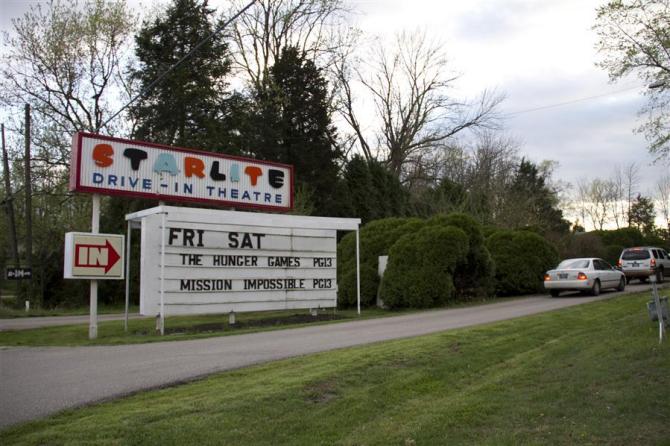
I’m grappling with the idea that it’s cooler to be a TV fan than a movie buff.
Today’s most critically acclaimed TV shows are also the most buzzed about in circles that don’t revolve around Chuck Lorre sitcoms. “Breaking Bad,” “Mad Men,” “Downton Abbey” and “Community” are just some in the mix of what’s both cool and smart.
But movie critics are all jumping to see “The Turin Horse.” It’s the final film by the aging Hungarian master Bela Tarr. It’s slow, depressing, in black and white, has little dialogue and is bound to be this year’s art house masterpiece. It’s not exactly a blockbuster.
I love movies for their artistry, abstractness and technical wizardry. What’s frustrating to me is that people groomed on TV neglect those points because TV, much as I watch it, possesses none of these.
My goal now is to address these gaps without condemning TV as a whole.

TV is not a visual medium
The image of Luke Skywalker stepping outside to watch Tattooine’s two setting suns burns vividly in my mind. The wedding from “The Godfather” is there too, along with E.T. riding a bike in front of the moon or Lawrence of Arabia standing victoriously on a raided train.
I have fond memories of many of television’s finest moments, but I can hardly visualize any of them.
TV lacks iconic visual moments. A Google image search will prove me right. Search any good movie last year, even one you haven’t seen, and familiar images will still be there.
You may get Walter White standing in his underpants with a gun if you search a TV show, but you’ll mostly get cast photos and promos.
Many of these shows are gorgeous in HD with rich set dressing and costumes, but the nature of television requires cinematic simplicity and familiarity.
If one episode of a show looks too radically different from the next, people get wary. So directors develop patterns when shooting on a set, including reused establishing shots and lots of close up, over the shoulder conversations.
Rarely then do we stand back and marvel at the beauty or craft of an individual shot. Often film has the luxury of larger budgets and a longer shooting schedule, but there are dozens of indies that do away with HD cameras and are still more visually stimulating.
In fact, TV is not a visual medium. Its closest relative following World War II was radio, which likewise evolved TV into an art form that valued story over style.

TV is all about story
Any film school will tell you the three most important things a filmmaker can focus on are story, story, story.
Students then crank out a concept driven show like “Lost” with a million different narrative threads and an intricate web of clues that’ll add up by the season’s end.
But what that neglects are either shows with elegant, artistic simplicity or shows that are truly surreal.
And when something like “The Tree of Life” comes along and is a visual and emotional feast rather than a narrative one, people flip out.
“What does it all mean,” they cry, as if analyzing a string of lottery numbers that’ll key in the secret behind an island and smoke monster.
There’s a reason it’s called an “unconventional narrative.” Often, there’s not a complex answer to unravel because it’s anything but conventional. It’s art, beauty and expressionism for its own sake, and anyone who has seen the films of Bunuel, Kubrick, Tarkovsky, Tarr, Fellini, Malick and countless others would know that.

TV is never ending
If I ask to watch “Lawrence of Arabia,” you cringe at its length. But you won’t bat an eye at a TV marathon.
If I don’t get into a show it’s because I can watch a dozen movies in the time it takes to watch just one season on Netflix.
And if I get behind on a new, must-see TV show, the moment has already passed. There’s no catching up with so many other things to watch.
But TV thrives on its endless narratives. In fact, TV is the only art form that can actually change between episodes and seasons as people watch and debate.
This is so true that TV now encourages live discussions on Twitter through strategic hashtags, whereas doing so in a theater is plain rude.
If I was an old fashioned troll I could say that a work of art should stand alone with one artist behind it, and a TV series with a million contributors on social media is intrinsically not that.

TV is not film
Everything I’ve argued could also be a reason for why TV is so special.
The strength of TV is that it’s not film’s bastard child. In the last decade alone it has learned to tell stories in a way no other medium can and dispelled most rumors that TV is nothing but a trashy wasteland.
And there are even exceptions to my rules. “Louie” is a show that represents what television could be if it chose to follow that path. It’s a program that uses a serialized format to its advantage to create essentially short films. “Louie” is not only well made and often surreal, but individual episodes can stand alone as art. Not to mention, Louis C.K. is TV’s closest example to an auteur.
What we’re left with is a war between two completely different art forms and two sets of preferences. It’s black and white, but we’ve been comparing two shades of gray.
That’s why I’m scared when movie theaters are losing business to a digital age, episodic film franchises dominate the market and Netflix moves closer and closer to just being HBO.
Film is becoming the cultural dinosaur, and TV is thriving in a way that threatens to make interesting movies extinct.









